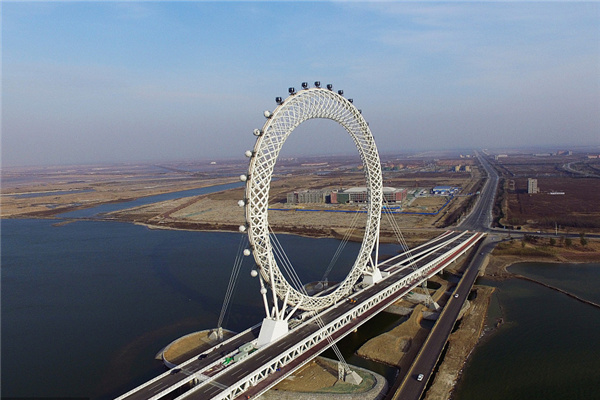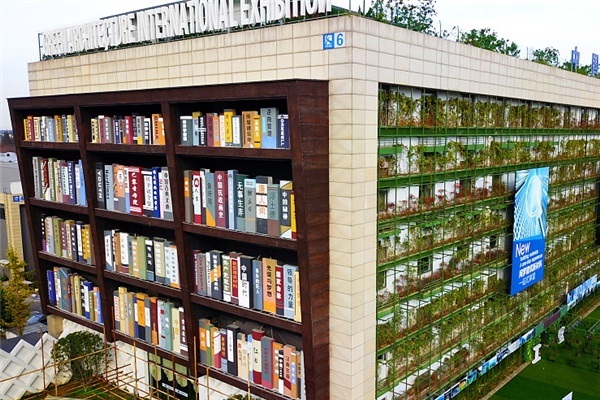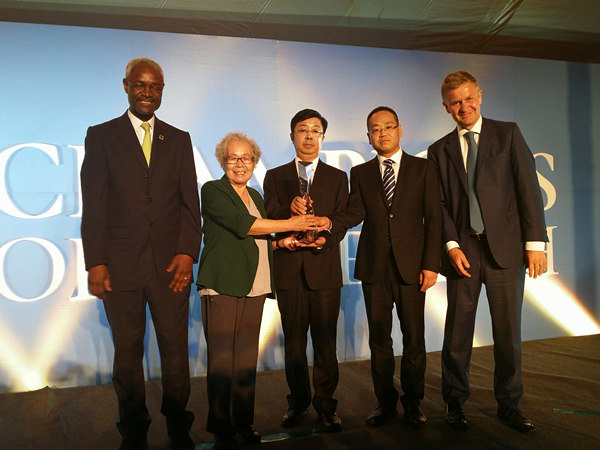

Editor's Note: What are the hallmarks of a good economist?
According to Frank Gong, he must be a thinker who can organize ideas logically, a psychologist who knows what the market is thinking, an actor who has the emotional skills to move his audience and an athlete who is energetic.
It is these "four principles" that helped Gong, JP Morgan Chase & Co's head of China research and strategy, win the "Best Research Team in China" award for the fourth time.

In an interview with China Business Weekly reporter Zhang Ran, Gong shared his views on the prospects for the Chinese economy.
Q: How do you judge the effect of the government's stimulus plan? And how will the economy perform in the coming months?
A: The latest economic statistics from China appear consistent with a return to growth in the current quarter, led by solid expansion in domestic demand.
Fixed-asset investment accelerated to a pace of 33.9 percent year-on-year in April, rivaling the peak rates of the past decade. Details show that fiscal stimulus is driving the acceleration, with government-supported categories including transportation, the power grid, housing and healthcare being targeted for expansion.
Besides the strong uptrend in public sector investment, private housing investment could well surprise in the coming quarters. Indeed, the strong upturn in property transaction volumes in the first quarter of 2009 appears sustainable as end-user demand still remains resilient, given lower prices, various incentives provided by the central and local governments, and solid household income growth. As a result, the current inventory level in the property market could be easily absorbed by the end of this year.
However, on the supply front, growth in real estate investment has decelerated sharply since mid-2008, raising the possibility that the property market may encounter insufficient supply next year. As a result, private housing investment could bottom out and start to pick up in the current quarter, which will not only directly contribute to headline fixed asset investment growth, but also will help boost production in a series of related industries, including steel, cement and construction materials. This should also help boost consumption for furniture, household appliances, and related items.
Consumer spending is also growing strongly, paced by a surge in car sales, which have reached record highs in response to government sales incentives. The strength of household consumption is also spreading to other sectors, helped by a boost to purchasing power from lower prices, decent household income growth, easing unemployment pressure and the impact of rising equity prices.
In particular, we believe rising inflation expectations and reduced deflation expectations are good for the economy, especially for continued strong property transactions and discretionary consumer spending.
While the headline consumer price index (CPI) will likely continue to fall in the coming months, the worst of deflation appears already behind us. We believe the recent price reforms and liberalization in energy and electricity sectors help to reduce deflation expectation risks and increased inflation expectations in a deflationary environment - almost a "dream scenario" for many central bankers around the world.
Q: What do you think the government policies will focus on in the future?
A: The government's policies will continue to be accommodative and focus on consumption and medium-term reforms. The government has remained vigilant about developments in the global environment and should continue to maintain an accommodative monetary environment.
We look for further reserve requirement ratio cuts, potentially in the second half when credit expansion cools and the trade surplus falls in 12-month terms. As we look for headline CPI to continue to fall in coming months (averaging -0.5 percent year-on-year in 2009), we believe that there is still room for the central bank to cut interest rates.
Nonetheless, a series of price reforms could come earlier and be more aggressive than we had expected, turning the year-on-year headline CPI inflation positive before the further quarter, suggesting that the room for further rate cuts is limited.
On the fiscal side, if the recent recovery in private activity is sustained, the government is less likely to propose further stimulus measures in the near term, especially with regard to infrastructure investment. However, we believe policymakers will continue to focus on stimulating domestic consumption. The government will also likely stick to its medium-term economic and financial reforms and liberalization.
Given China's importance in the global economy, there has been increasing interest in the market about how much China can lift up the rest of the world especially its neighbors. In our view, Asian exporters including China still depend heavily on the final demand from developed markets, and thus the full recovery of Asian exports depends crucially on the recovery of the final demand by consumer and corporate spending in developed countries.
However, the bounce in the Chinese mainland's domestic demand is also becoming increasingly important for regional exporters. It is interesting to note that exports from two key tech producers, South Korea and Taiwan, have shown signs of improvement since early this year, which is in stark contrast with the exports of the Chinese mainland, which continued to show sequential declines. These diverging trends reflect differences in end-demand-downward pressure on the Chinese mainland's exports is being driven by the continued slide in developed economies, while exports from South Korea and Taiwan are benefiting from the recent pickup in the Chinese mainland's domestic demand.
Neighboring economies could also benefit from fast rising spending on outbound travel from Chinese mainland tourists. Hong Kong and Taiwan are the first group of beneficiaries given their further opening up to mainland tourists. For example, Taiwan's tourism arrivals from the Chinese mainland also increased significantly since the introduction of cross-Strait direct flights and its opening to mainland tourists, with daily arrivals from the Chinese mainland already exceeding the 3,000 mark.
Q: Will the rebound in China's economy result in any significant rise in international commodity prices?
A: A rebound in Chinese growth would be an important development for commodity exporters, but the global market should not expect too much.
After the sharp plunge in the second half of 2008, imports of iron ore have rallied since earlier this year, in anticipation that the stimulus package from the Chinese government would stimulate steel demand. In addition, April imports of copper (399,800 tons) and aluminum (440,000 tons) are both the highest monthly import levels on record.
Although China is an important stabilizing factor for global commodity demand and prices, we believe it is unlikely to drive a significant price rally for the following reasons:
First, the rising imports and prices of industrial metals earlier this year mainly reflects some re-stocking by traders in anticipation of stronger demand going forward and purchases by China's State Reserve Bureau, which is unlikely to persist.
Second, and more fundamentally, we believe the boost to total commodity demand from public infrastructure investment may not fully offset the drag from the notably weaker growth in industrial production and private fixed investment.
Finally, China's recovery does not automatically translate into external demand for resources because of import substitution and the Chinese government's worry of over-stimulating investment that could result in overcapacity and bad investment/assets. Indeed, the composition of the 4-trillion yuan fiscal package was revised during the National People's Congress, with less spending on infrastructure but more on social infrastructure and economic restructuring to stimulate domestic consumption.
(China Daily 06/08/2009 page2)













